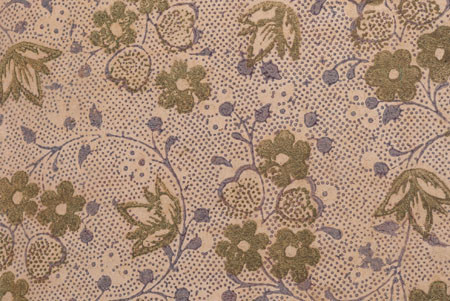What a delight for the reader who turns back the cover of Monaldi’s “Istoria delle famiglie della città di Firenze” and discovers these exquisite Dutch-gilt endpapers.
Endpapers developed from a utilitarian purpose. Early books often had thick, hardwood covers, cut from trees such as oak, poplar or ash. These rough bindings could be unkind to the delicate illuminations that graced the pages of medieval manuscripts and early printed works. Book makers slipped a blank sheet of parchment or waste manuscript in between the text block and the cover as a way to protect the pages from handling and wear.
By the eighteenth century, bindings became much finer, and illuminations in books became much rarer. But rather than drop the endpapers, book makers began to experiment with ways to use endpapers for artistic effect. That is when these lavishly designed endpapers came into fashion. Although Monaldi’s manuscript was copied in the 1600s, it is bound in fine eighteenth-century vellum. The Dutch-gilt endpapers were likely to have been inserted at the time of the manuscript’s re-binding.

Dutch gilt is a variation on printed paper patterns devised by the dominotiers of France, a guild that flourished in the sixteenth century. The guild was known for its skill at making decorated paper wall hangings – essentially early wallpaper. Dutch gilt, or Dutch flowered, endpapers are among the loveliest of those produced in the eighteenth century. The patterns replicate designs from brocade and damask textiles of the period. Some patterns are embossed, or printed in relief, as these endpapers are, and are highlighted with gold and silver.
